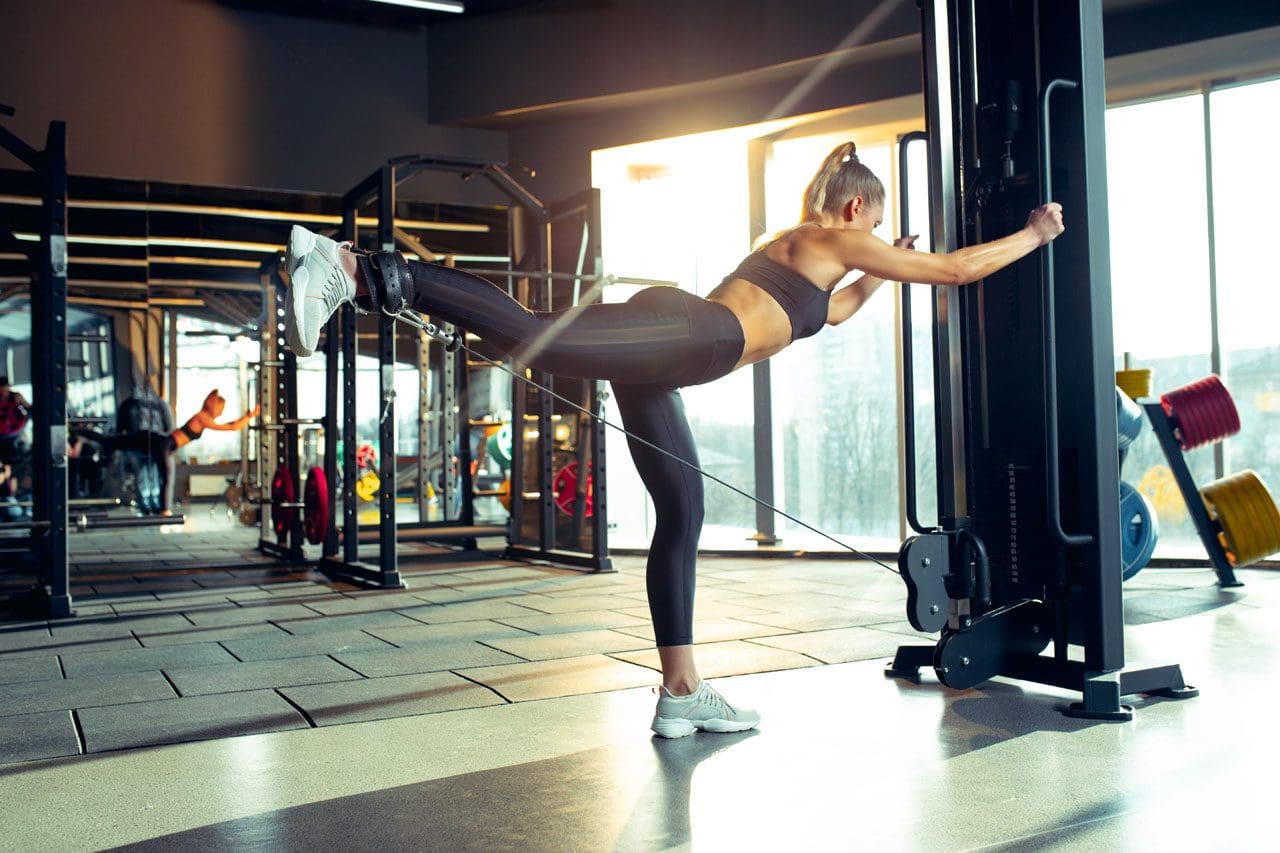For individuals starting an exercise program and professional athletes, training must be well-spent to develop fitness and specific sports skills. It is important to remember basic athletic training concepts to ensure you are making the most of the workouts. Working one-on-one with a sports medicine doctor, chiropractor, physical therapist, or personal trainer can help individuals achieve fitness goals.

Athletic Training Checklist
Abilities and Interests
- Individuals need to enjoy the training to stick with the program long enough to see results.
- Rather than picking a generic program or doing what everyone else is doing, adjust workout time and intensity to fit your lifestyle, current fitness level, and ability to push when needed.
- Choose a workout routine that meets your personal goals.
- Working with a trainer is highly recommended if you don't know where to begin.
- For more advanced individuals, a personal trainer is a great way to fine-tune a fitness plan.
Keep It Simple
- Athletic training involves consistency and focus.
- Simplify the training by alternating hard, easy, long, and short workouts and sports skills practice.
- Remember to enjoy the workouts and listen to your body.
Be Mindful of Overtraining
- The body does not get stronger by constantly training.
- The body needs to rest and be allowed to recover to develop.
- Fitness is built by alternating workouts with recovery.
- The best way to avoid overtraining is to listen to your body.
- If your heart rate remains elevated after sleeping, or the legs feel heavy, and if motivation fades, more rest may be needed.
- For individuals who train year-round, taking a week off every three months is recommended, and it is also the time to change the training routine.
Variation
- Vary the workouts and intensity to enjoy a well-rounded routine that can help avoid burnout or plateauing.
- Alternate training intensity and workout time.
- Even training programs you enjoy can gradually lose physical efficiency if not changed.
- To improve, variation is needed to challenge the body in different ways.
- Workouts should be modified every month.
- Cross-training is another great way to vary a routine and improve fitness.
Training Flexibility
- Training consistency is what matters.
- Don't worry if you have to miss a day.
- Continue with the training plan.
Realistic Goals
- Finding a balance when setting goals between what you want to achieve and what you can do.
- Be honest about fitness levels and potential.
- If you are new to a sport or fitness routine, take it slow until you know what your body can accomplish to decrease the risk of injury.
Patience
- It takes time and consistency to build up fitness and performance.
- Avoid falling into the mindset that more is better.
- This can result in injuries and loss of motivation.
Consistency
- Even when starting with short workouts, doing them regularly is important.
- Avoid falling victim to working out hard only on weekends and doing nothing during the week.
- Injuries are much more common when exercise is inconsistent.
Nutrition
- Sports nutrition and hydration go are vital to improving your ability to exercise and train.
- Individuals on a regular exercise routine should reassess their nutrition plan.
Proper Equipment
- Sports injury prevention begins by using the right equipment.
- Whatever sport or exercise routine, ensure the equipment and footwear work and fit properly.
- Pads, helmets, and mouthguards are made to help protect athletes and should be utilized.
Becoming An Olympic Athlete
The information herein is not intended to replace a one-on-one relationship with a qualified healthcare professional or licensed physician and is not medical advice. We encourage you to make healthcare decisions based on your research and partnership with a qualified healthcare professional. Our information scope is limited to chiropractic, musculoskeletal, physical medicines, wellness, sensitive health issues, functional medicine articles, topics, and discussions. We provide and present clinical collaboration with specialists from various disciplines. Each specialist is governed by their professional scope of practice and their jurisdiction of licensure. We use functional health & wellness protocols to treat and support care for the injuries or disorders of the musculoskeletal system. Our videos, posts, topics, subjects, and insights cover clinical matters, issues, and topics that relate to and directly or indirectly support our clinical scope of practice.* Our office has reasonably attempted to provide supportive citations and identified the relevant research study or studies supporting our posts. We provide copies of supporting research studies available to regulatory boards and the public upon request.
We understand that we cover matters that require an additional explanation of how it may assist in a particular care plan or treatment protocol; therefore, to further discuss the subject matter above, please contact Dr. Alex Jimenez or contact us at 915-850-0900.
Dr. Alex Jimenez DC, MSACP, CCST, IFMCP*, CIFM*, ATN*
email: coach@elpasofunctionalmedicine.com
Licensed in: Texas & New Mexico*
References
American Dietetic Association, Dietitians of Canada, American College of Sports Medicine, Rodriguez NR, DiMarco NM, Langley S. American College of Sports Medicine Position Stand: Nutrition and Athletic Performance. Medicine & Science in Sports & Exercise. 2009;41(3):709-731. doi:10.1249/mss.0b013e31890eb86.
Beaupre, Justin, et al. “Athletic Training and Population Health Science.” Journal of athletic training vol. 57,2 (2022): 136-139. doi:10.4085/314-19
Garber CE, Blissmer B, Deschenes MR, et al. Quantity and Quality of Exercise for Developing and Maintaining Cardiorespiratory, Musculoskeletal, and Neuromotor Fitness in Apparently Healthy Adults. Medicine & Science in Sports & Exercise. 2011;43(7):1334-1359. doi:10.1249/mss.0b013e318213fefb.
Halson, Shona L, and Laura E Juliff. “Sleep, sport, and the brain.” Progress in brain research vol. 234 (2017): 13-31. doi:10.1016/bs.pbr.2017.06.006
Jeukendrup, Asker E. “Periodized Nutrition for Athletes.” Sports medicine (Auckland, N.Z.) vol. 47, Suppl 1 (2017): 51-63. doi:10.1007/s40279-017-0694-2
Kreher JB, Schwartz JB. Overtraining Syndrome: A Practical Guide. Sports Health. 2012;4(2):128-138. doi:10.1177/1941738111434406.
Mujika, Iñigo. “Quantification of Training and Competition Loads in Endurance Sports: Methods and Applications.” International Journal of sports physiology and Performance vol. 12, Suppl 2 (2017): S29-S217. doi:10.1123/ijspp.2016-0403




